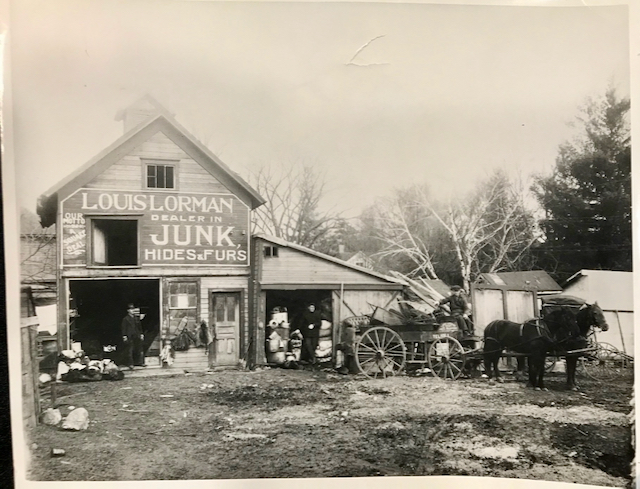By Ryan Whisner
The Fort Atkinson City Council approved a $458,000 contract with Edgerton Contractors Inc. for demolition work at the former Loeb-Lorman scrapyard.
In addition, the council authorized Fort Atkinson City Engineer Andy Selle to approve an additional $78,290 for other bid package items to be added.
All buildings, trees, fences, and things of that nature will be removed under the terms of the contract. The additional six or seven bid items include the removal of multiple concrete bunkers and a more prominent 30-foot by 30-foot steel-plated section used as a staging area. Selle will be talking to the contractor about those items before the additional funds are expended.
Selle noted that any contract regarding the remediation process, including services such as excavating and hauling away contaminated soil, placement of clean general fill, and installation of direct contact barriers, will be brought forth to the council later. It may involve Edgerton Contractors or maybe another bidder.
Selle admits the overall bid process for the work was a bit unusual.
“We had a base bid, which includes things we know will be happening and that is the removal of all vertical structures on the property. Then there are the alternative items that are intended to cover what happens next and that includes remediation.”
Although four contractors toured the sites, only Edgerton Contractors submitted a bid for the proposed demolition work.
Combined, the council approved funds totaling $612,753 for the demolition work at 115 Lorman St., 600 Oak St., and 205 Hake St which compose the former Loeb-Lorman properties that the city acquired in early 2021.
The acquisition of the property and subsequent site cleanup is being paid for through a $1.44 million state Community Development Block Grant. For the purchase, the seller received a lump sum of $182,000, with the land’s remaining value of $550,000 to be used for site remediation. Any monies not used for remediation will be returned to the seller, according to city documents.
The second specification of the grant is that the property is not to undergo any major improvements for five years after clean-up.
According to Selle, a site investigation into both the buildings and possible soil contaminants commenced in spring 2021. The investigation is nearing its endpoint as the Wisconsin Department of Natural Resources reviews the data and recommendations for remediation.
“We don’t know exactly what’s going to be required for remediation yet,” he said. “We have the tools in place to be able to hopefully, answer whatever the requirements are from the DNR on the remediation side of things.”
An onsite meeting is scheduled for Monday, Oct. 10 with the DNR to provide some additional direction on that portion of the site clean-up. The city is on a schedule to complete work associated with the grant by December 31, 2022.
Overall, Selle said the risk of losing the grant funding is minimal.
“I can’t say definitively that there is no risk,” the city engineer said. “I can say that I think we’re in a very good position to manage that risk. I don’t see a scenario where we do all this demolition and we turn in the receipts for it and they say, I’m sorry, we’re not going to pay for that because the remediation portion may have fallen short of what their expectations were.”
“The grant that we put forward was for blight elimination, and it included us eliminating blight by removing the buildings and cleaning up the sites that were the Lorman properties,” he said. “We also included remediation, but the thing about the remediation is we had no idea what was on the site at the time.”
According to Selle, almost no work needs to be done on the Hake Street site. At the Oak Street location, there is some lead contamination, however, he is confident the city can present a plan that would be acceptable to the DNR.
However, he said it is specifically the Lorman Street parcel, which totals approximately 8 acres, that is the most concerning. During the site investigation process, there were some unexpected contaminants found.
“That’s what we’re working through is how do we only best manage those to reduce the risk long term for any kind of exposure, not only to the public but to groundwater and things like that,” Selle said.
Through the process, he has learned that in some cases the best thing to do is to leave the contaminant where it’s at.
“You ascertain what the potential is for that to move either through the dust in the air or through ingestion by somebody putting a garden there or through rain and taking them into groundwater,” he said. “You have all these aspects and if they’re all very minimal or zero, then sometimes leaving it where it is, is okay.”
The city engineer admits he felt the concept was a bit counterintuitive, but if it truly is the best option, it is also something to consider, he said.
“I’m very confident that we will have demolished the Lorman buildings, and we will see improvement to those three parcels,” Selle said. “The remediation side of things has been a bit of a complexity, to say the least.” He estimates there is a 75% chance of completing all the remediation work by the deadline.
An earlier story about remediation plans at the Loeb-Lorman site is here: https://fortatkinsononline.com/city-to-begin-second-phase-remediation-process-at-former-loeb-lorman-site/.
An earlier two-part story sharing the history of the site is here: https://fortatkinsononline.com/american-tale-immigrants-dream-creates-recycling-history-in-fort/, and here: https://fortatkinsononline.com/american-tale-from-lorman-to-loeb-lorman-and-expansion-into-worldwide-markets/.

Several photos are found at the Hoard Historical Museum which help depict the history of the former Loeb-Lorman scrapyard. The Louis and Clara Lorman home once served as the Lorman family’s first scrapyard. The home and barn were once located on what is today Whitewater Avenue. File photo/Hoard Historical Museum.
This post has already been read 2697 times!